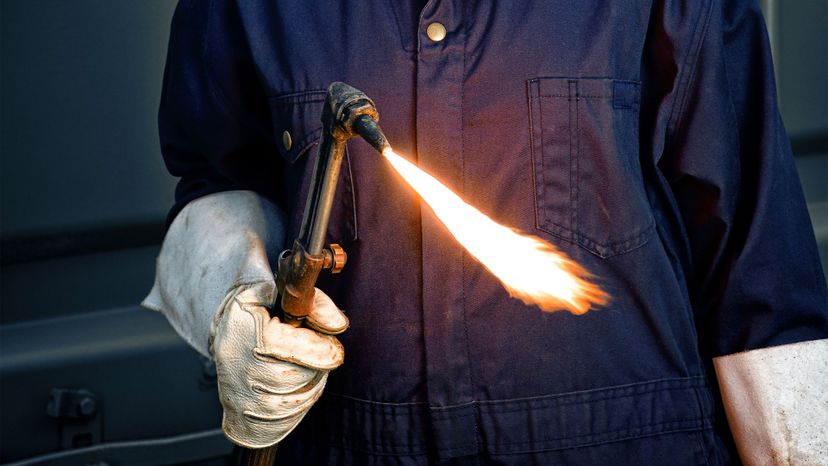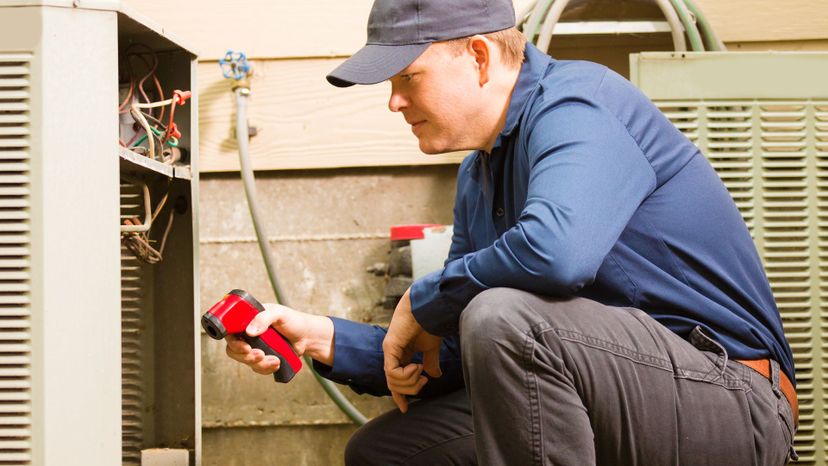
About This Quiz
A toolbox is an essential must-have in many different types of employment around the world. A car mechanic, for sure! An electrician ... can't do without one. A handyman, yes of course.
And in the world of heating, ventilation and air conditioning (HVAC), it is no different. Of course, although many tools are similar, there are many specialized pieces of equipment that are used on a daily basis to not only help with repairs but detect problems. A great example of this would be a leak in the gas system that forms an integral part of your air conditioner. Leaking gas means it certainly is not operating properly, so that means not enough warmth in winter or cold air in summer.
Heating, ventilation and air conditioning systems are found all over, in our homes, at our offices and even in our cars. Each of these needs to be maintained to keep the system in peak shape, able to do its job at 100%.
So in this quiz, we are going to see if you can identify the tools an HVAC technician would have in his toolbox. Some are similar to what technicians in other fields would carry, while others are specific to the field.
Can you pick them out?
Good luck!
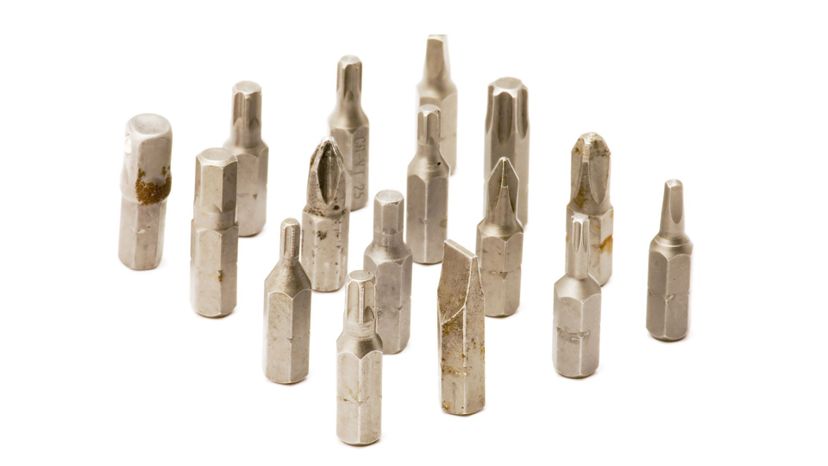
Either use a multipurpose screwdriver with various detachable heads or a selection of screwdrivers such as a flathead and Phillips. These are used every day in the HVAC environment.
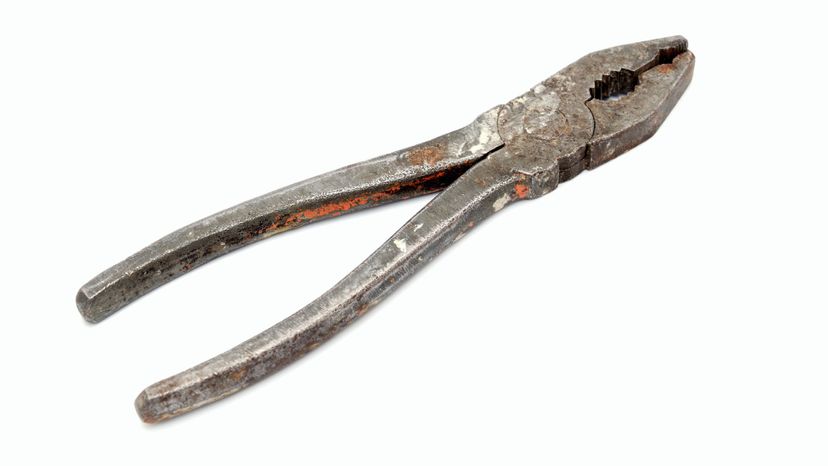
A range of pliers are important in HVAC work, including the flat nose.

Sometimes things need to be hit. That's where a hammer comes in useful. As an example, a tight bolt might need a friendly tap to loosen it.
Advertisement
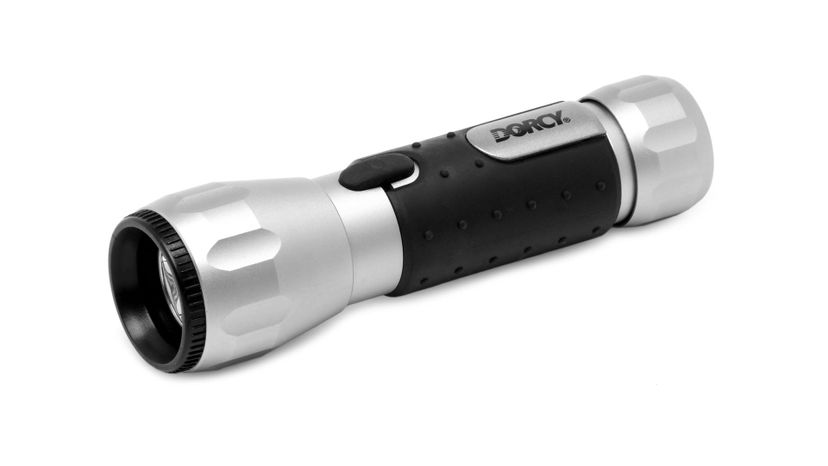
A flashlight is perfect for those dark places where equipment is stored.
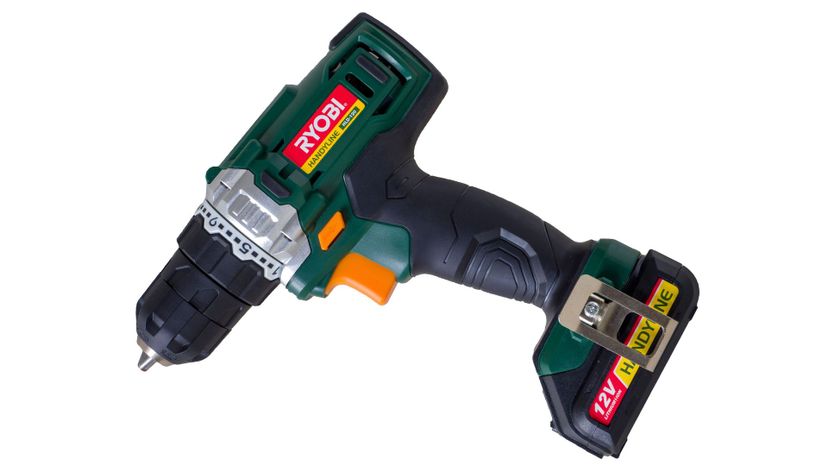
Often, no power points are available when working on HVAC units. Cordless drills are therefore, a must!
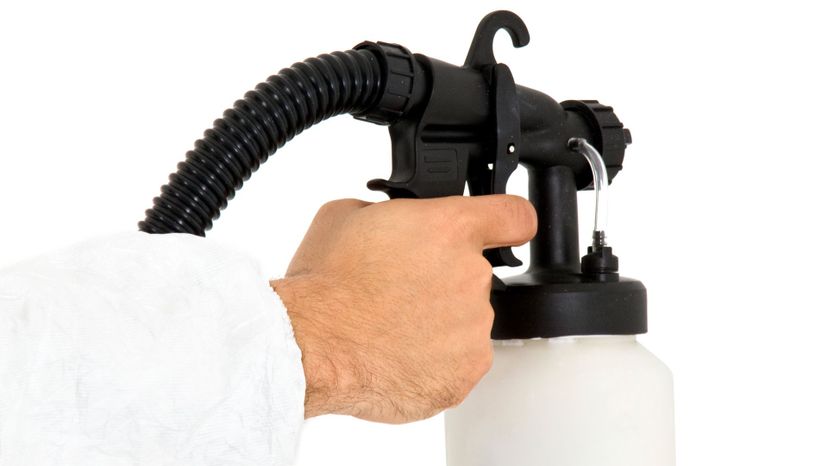
Refrigeration units, air conditioners and other HVAC components are often dusty, especially if they are older units. Sometimes they need a good clean before they are worked on. A heavy-duty sprayer is the best way to do this.
Advertisement
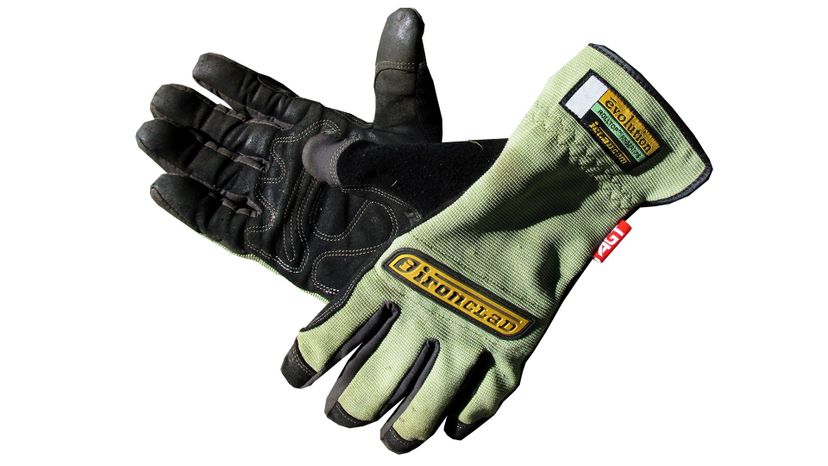
To protect your hands, a pair of thick gloves should always be in a HVAC technician's toolbox.

The perfect way to get to higher places, a stepladder is easily transported as well.
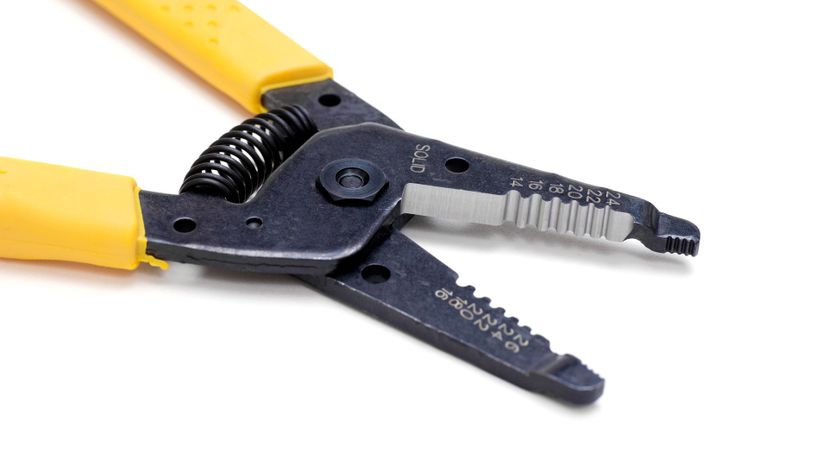
Does exactly what it says on the box, strips wires as needed. Don't buy cheap. You want wire strippers that will do the job the first time!
Advertisement
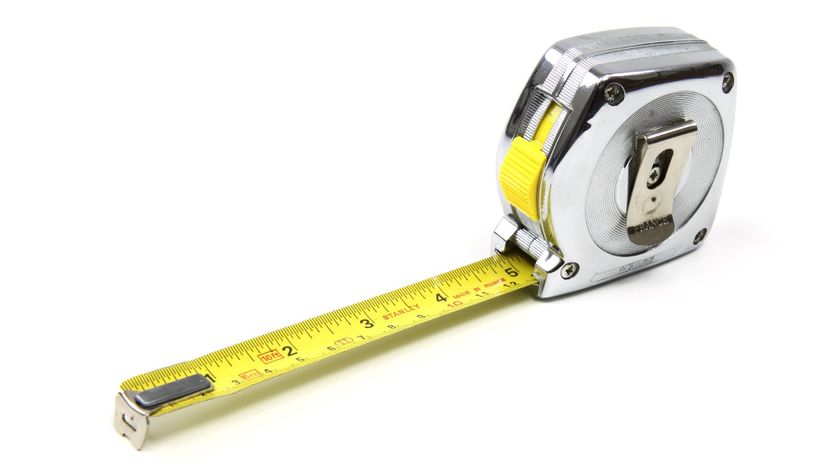
A tape measure of around 50 feet is a toolbox essential in the HVAC world. You will be measuring often.

A range of different-sized crescent wrenches are always handy to have in any toolbox and in an HVAC environment as well.
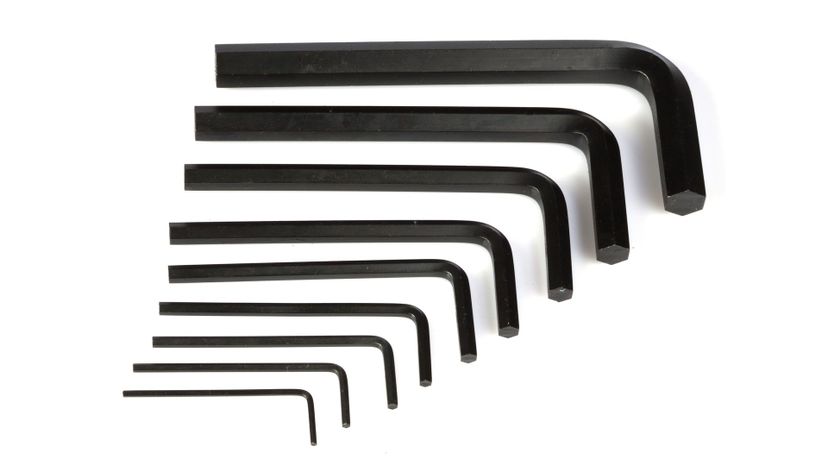
Never leave home without them! Many manufacturers use bolts with Allen key heads, so having a range of sizes is a great idea as well. Having a metric and standard set is what you should aim for.
Advertisement
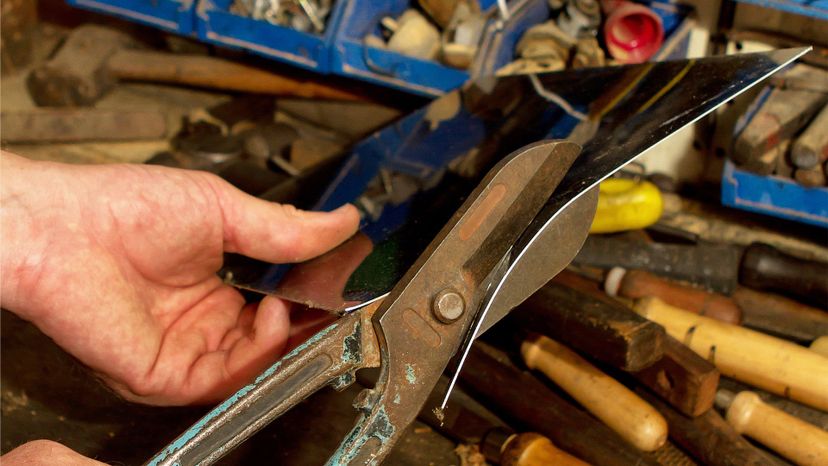
While working in an HVAC environment, cutting metal is a daily requirement. A sharp pair of metal cutters will get the job done.
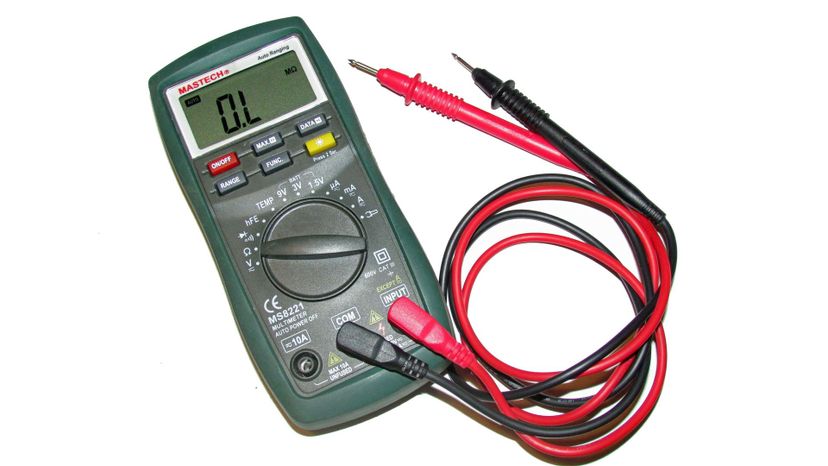
A top of the range multi-meter can test a/c and d/c voltage, amps, temperature, and micro-farads. It is a must for your toolbox.
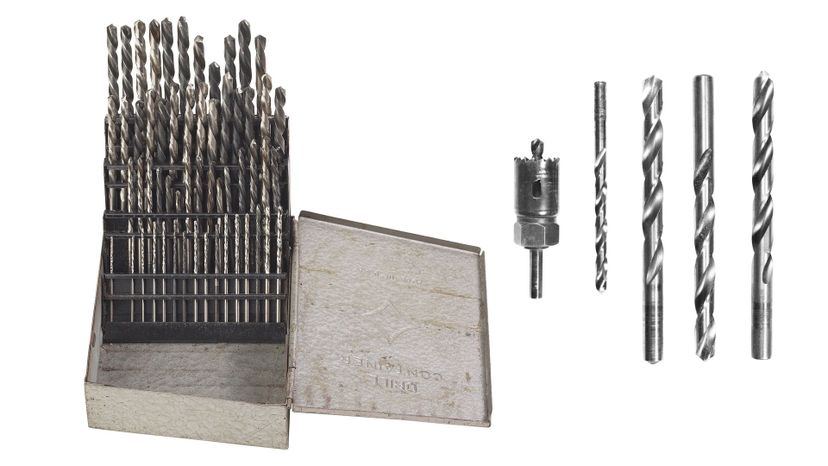
Having a range of drill bits means never getting frustrated when holes are needed. Nothing is more frustrating than not having the necessary bit.
Advertisement
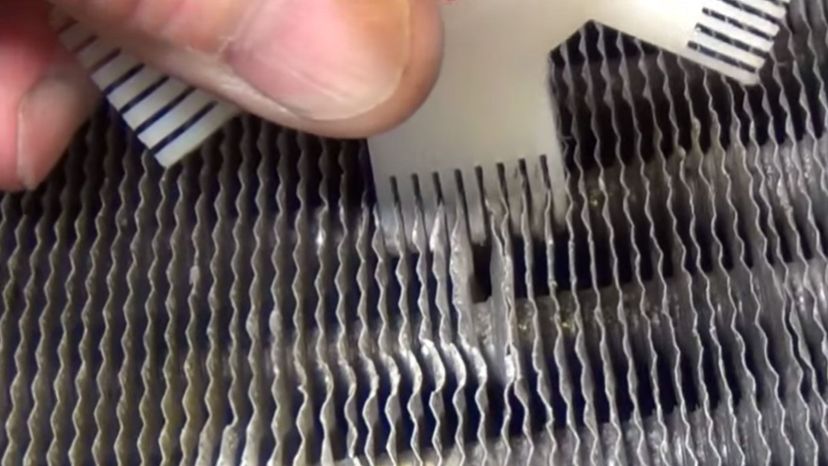
This is used to help straighten bent fins on an air-conditioning unit. Of course, if they are bent too much, they will need to be replaced.

These can be left in supply or return vents while working on the HVAC system to make it easier to monitor temperatures.
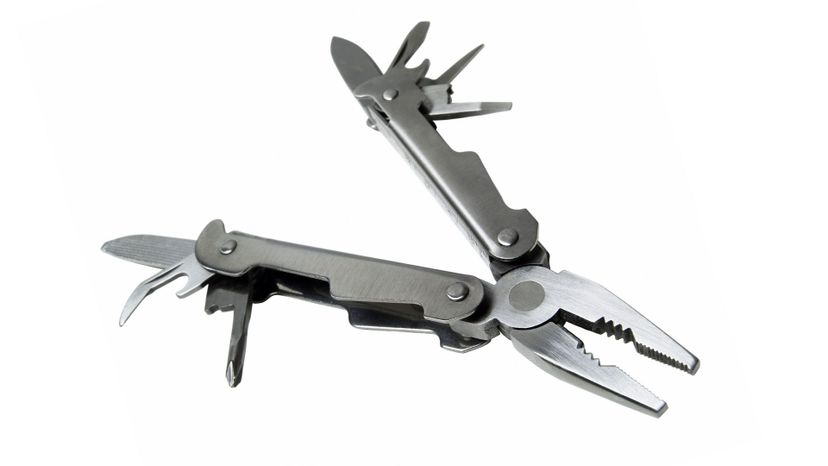
A multi-tool can come in very useful in many situations. No self-respecting HVAC technician would be without one on their belt.
Advertisement
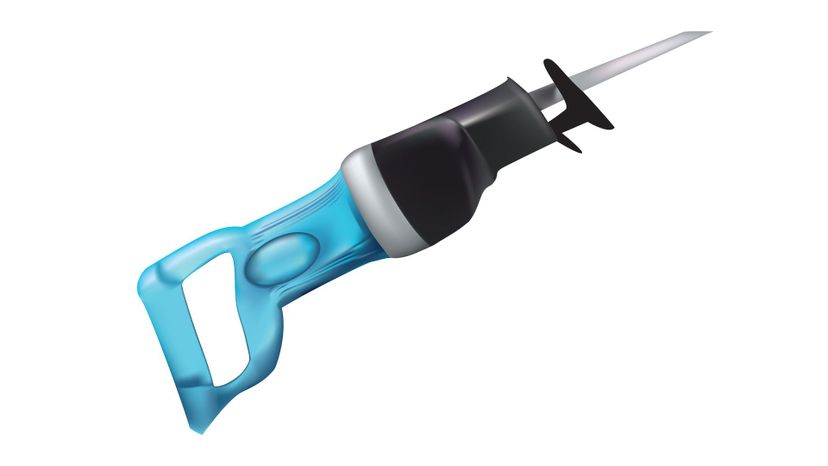
For when sawing is the only option, a Sawzall can cut through just about anything.
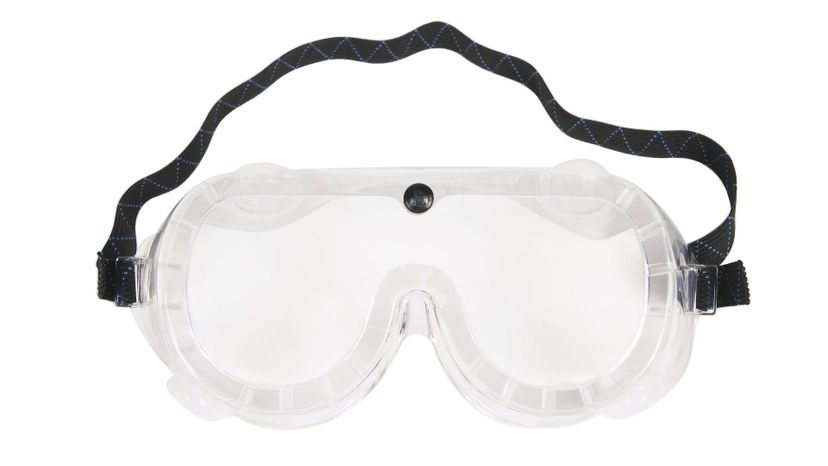
To protect your eyes, a pair of safety glasses should always be in a HVAC technician's toolbox.
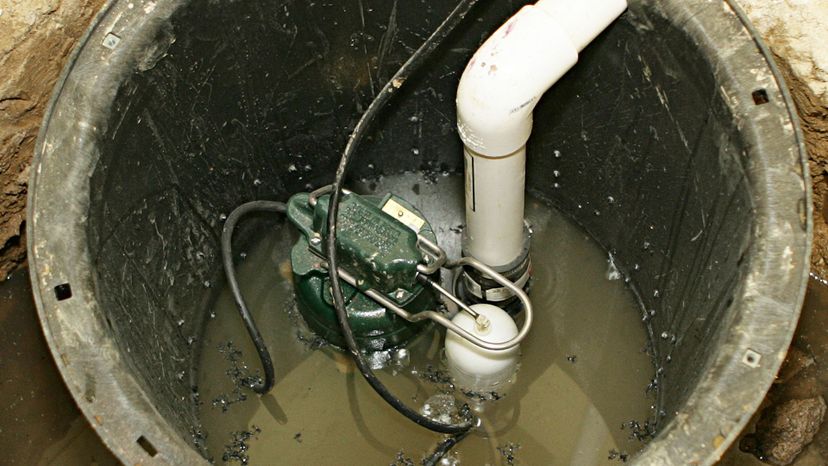
Although it can be costly, a vacuum pump is a great addition to any HVAC toolbox. It helps to remove any excess water and water vapor in an air conditioning system, for instance.
Advertisement
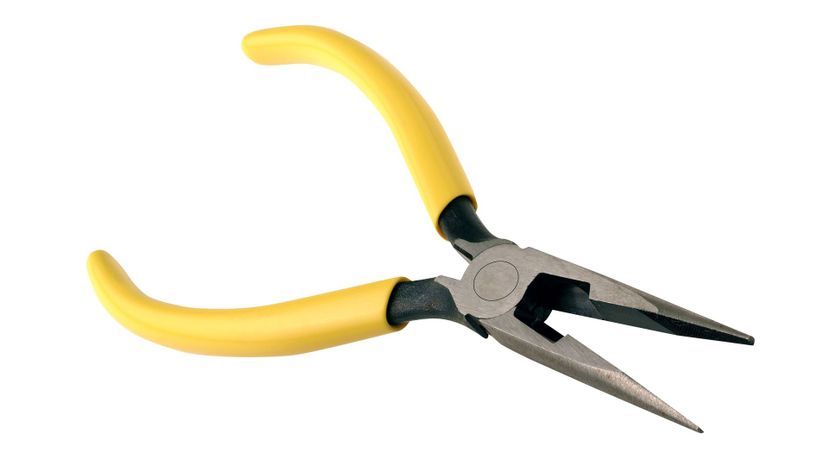
A range of pliers are important in HVAC work including the needle nose.

A temperature clamp can plug into a multi-meter and is used to tell the temperature at a certain point in the HVAC system.
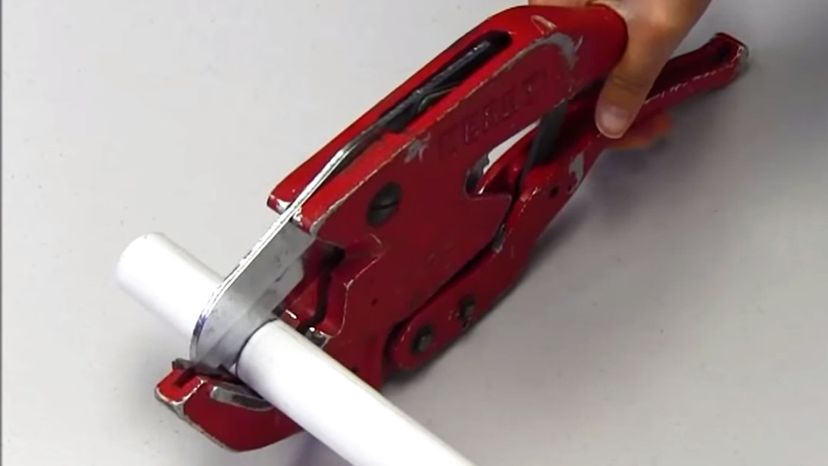
PVC cutters are the perfect tool to cut PVC piping.
Advertisement
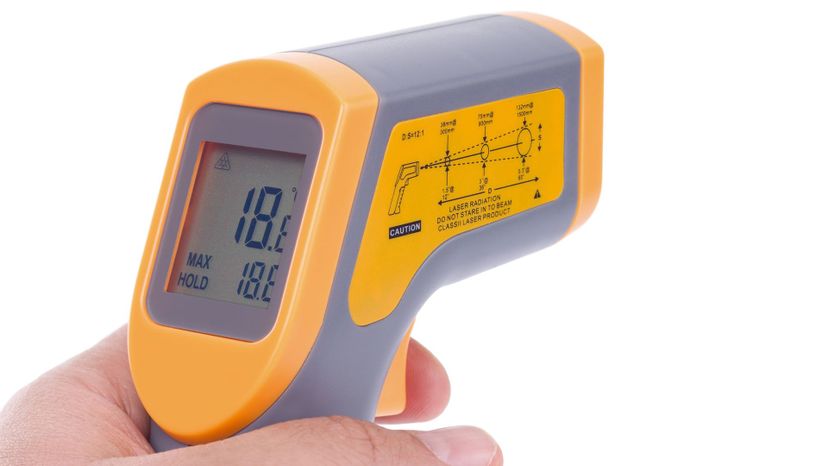
An infra-red digital thermometer is perfect to take accurate readings to check for motors, breakers or other parts of an HVAC system that is overheating.

Side snips can be used to cut PVC piping, wires, thin pieces of metal. They are invaluable in the HVAC environment.
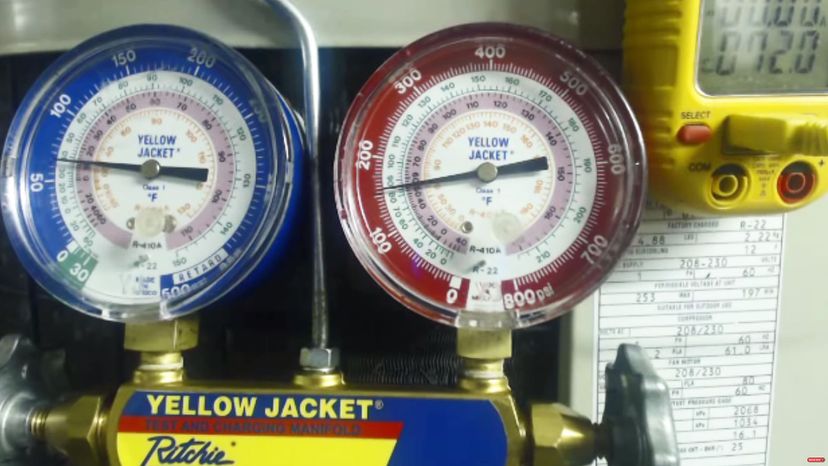
An important part of an HVAC technician's toolbox, refrigeration gauges can read the different pressures of gases in air conditioning or cooling systems.
Advertisement
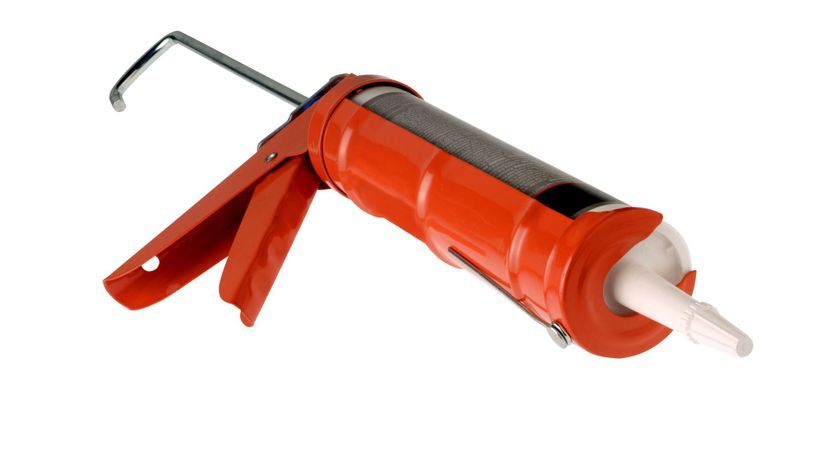
A caulking gun is used to seal piping, among other handy applications.
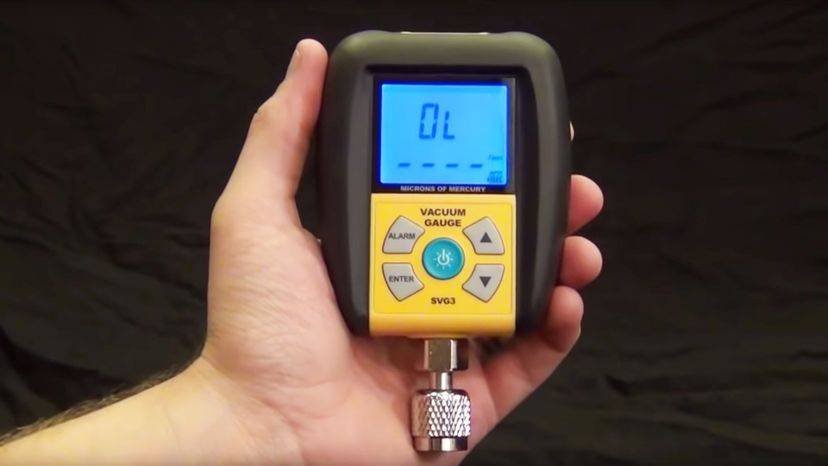
Need to measure the strength of a vacuum in an HVAC system? Then a micron gauge is the perfect gadget.
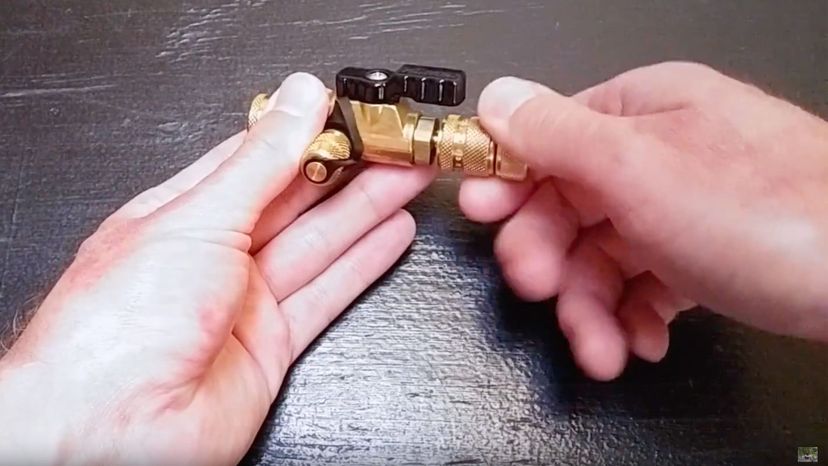
A core removal tool is used to remove restrictive access valves in HVAC systems.
Advertisement
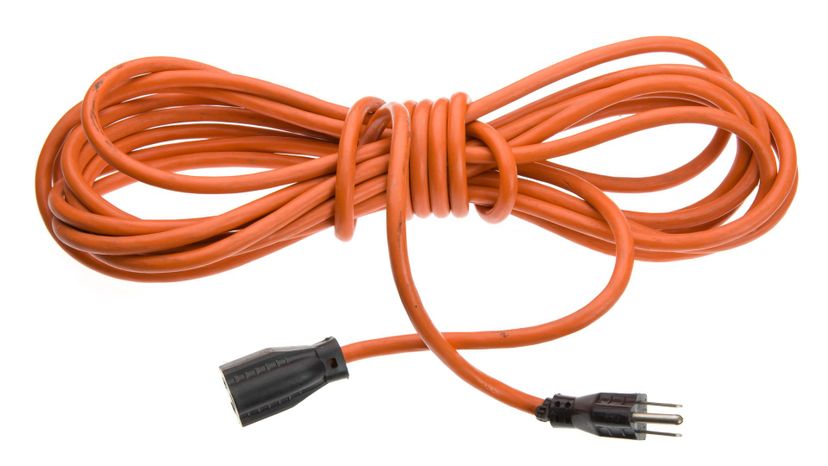
Sometimes power outlets are not easily to come by where HVAC systems are found. That's where an extension lead comes in handy.

A pair of heavy duty scissors is perfect for cutting thin PVC piping among other things.

Tubing cutters do what they say, cut tubing ... a daily requirement in the HVAC world.
Advertisement
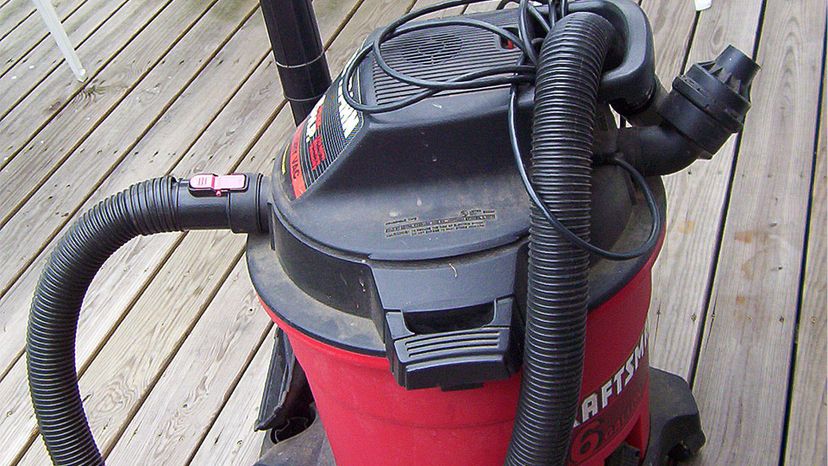
The easiest way to clear a clogged drain line in an HVAC system is by simply using a wet/dry vacuum cleaner.
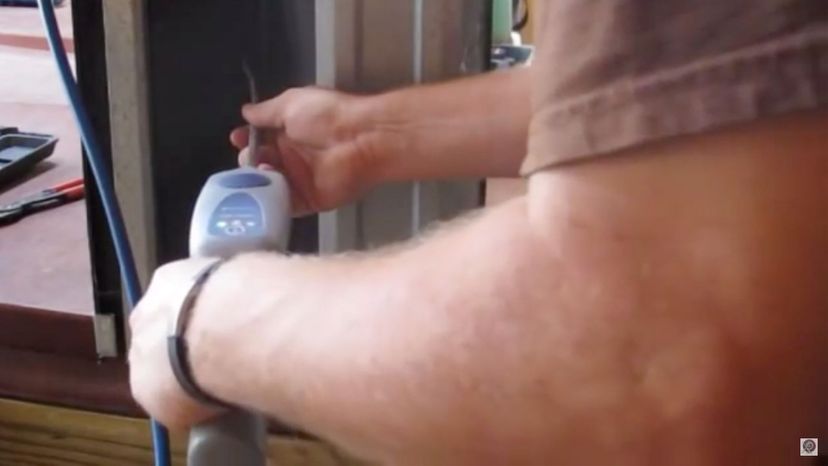
Although sometimes leaks are obvious to find, when they are small, a leak detector will locate them in next to no time.
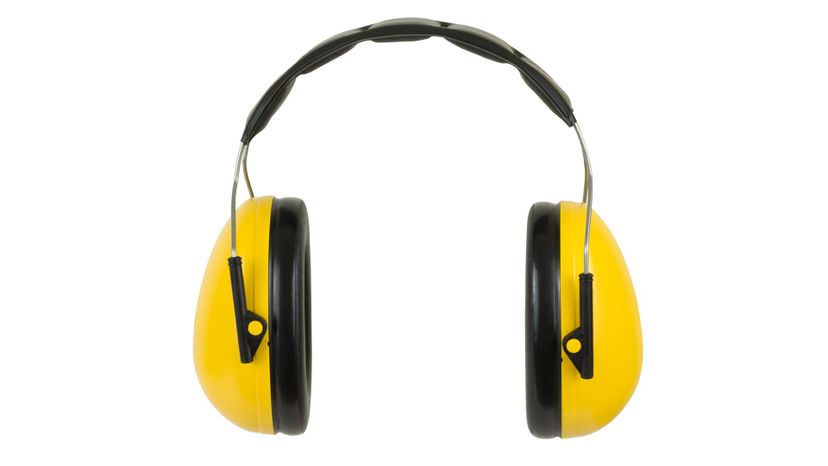
HVAC systems can be noisy. To protect their ears, HVAC technicials should keep a pair of ear muffs handy.
Advertisement
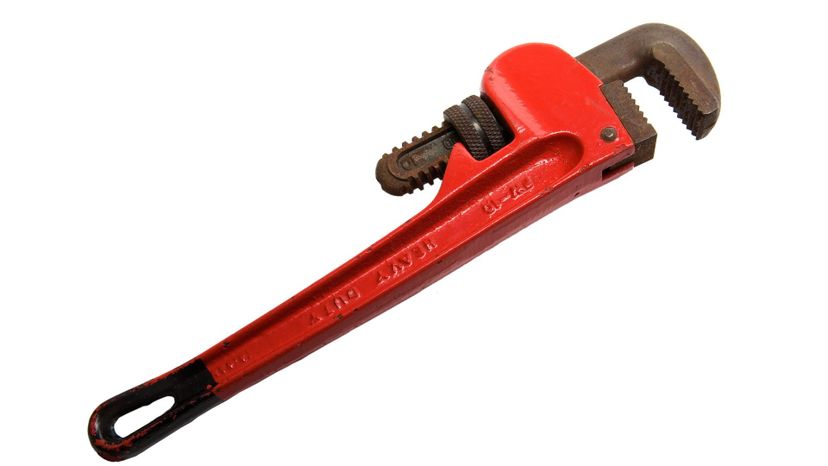
No toolbox is complete without a pipe wrench, especially one belonging to a HVAC technician.
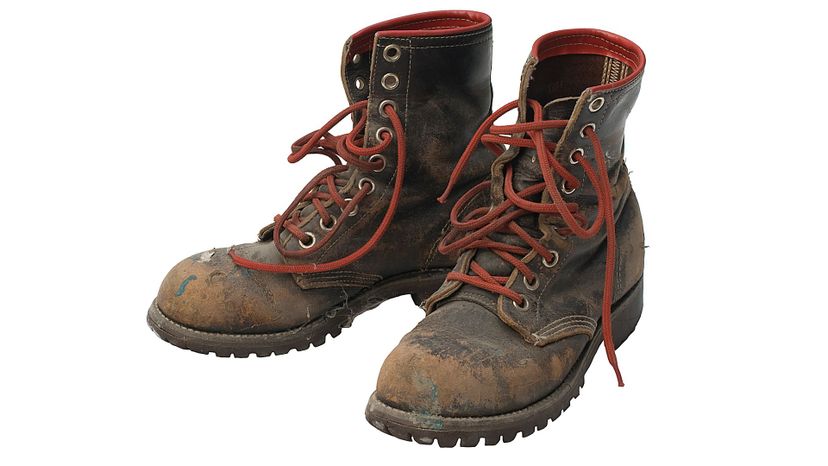
HVAC equipment is heavy, and technicians should wear steel-toed boots to protect their feet when carrying parts or air conditioning units.
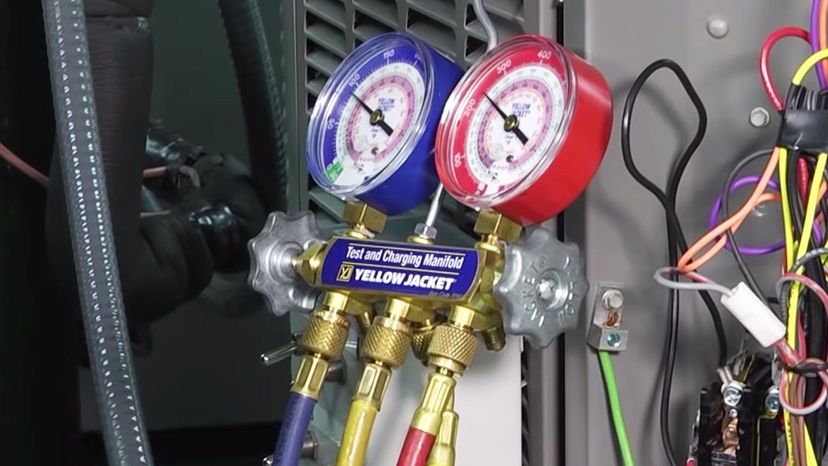
A manifold gauge is a must in an HVAC toolbox. It can help to determine if leaks are present in a system
Advertisement
